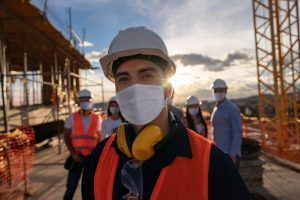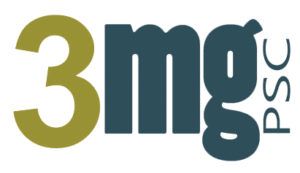 Adjusting to the new normal has created ripple effects for construction teams beyond social distancing and face masks. With projects ongoing from before the start of stay-at-home and lockdown orders, our firm has seen timelines expand, sequencing changes, developer unease—and even outright defiance—as the evolving crisis has revealed the places where the rubber meets the road, so to speak.
Adjusting to the new normal has created ripple effects for construction teams beyond social distancing and face masks. With projects ongoing from before the start of stay-at-home and lockdown orders, our firm has seen timelines expand, sequencing changes, developer unease—and even outright defiance—as the evolving crisis has revealed the places where the rubber meets the road, so to speak.
As construction is set to “re-open” statewide in New Jersey, project stakeholders need to apply sensible strategies for keeping contractors and subtrade teams healthy, safe and productive. And as the medical community warns of a other waves for the pandemic, it is important for architects and GCs to be ready to adjust to possible lockdown orders down the road.
The following four lessons from recent experiences on completing (or not) ongoing projects are presented as a guide for project teams going forward during times of uncertainty.
Lesson 1 — Safety is a team effort
Compliance normally falls within the domain of the contractor, but these are times of heightened risk, in which public health is a collective responsibility. If a worker on site is not wearing their mask, the danger in looking the other way is not that worker’s alone—he could put other workers at risk, and their families.
And as the weather gets warmer and masks become increasingly uncomfortable to wear while working, enforcing safety measures because mission critical. Large companies typically already do this because they have the resources. Smaller firms will have to consider how to monitor their crews as well as subtrades, strategically and cost-effectively, to enforce safety requirements.
We can recall from early in our careers the strictly enforced safety protocols for many construction projects, including regular inspections by a safety superintendent. The level of policing needed to address both construction safety and public health concerns needs to rise to the occasion, and construction companies themselves will shoulder most of the responsibility. They are already expected to submit COVID plans, and enforce them.
Under normal circumstances, a site visit by the building inspector (or the client) will result in approvals for several advancements, but these days there’s usually just one component completed at a time.
Lesson 2 — Everything will take longer, so plan accordingly
Social distancing and state orders for essential construction work caused timelines to swell from days to weeks, or even months, as we learned from the lockdown order’s impact on a ten-unit multifamily adaptive reuse project. Trades have to work in alternating shifts rather than simultaneously, with exceptions for exterior crews who have more opportunities for social distance.
Under normal circumstances, a site visit by the building inspector (or the client) will result in approvals for several advancements, but these days there’s usually just one component completed at a time. The result is an increased number of site visits, sometimes twice or three times as many as in the past.
While frustrating, there is no way around it. Project teams that accept the cold hard facts of the new normal can try to find ways to innovate to reduce the timetables more than just marginally. Another silver lining is that additional site visits ensure construction is proceeding safely for our teams on the ground.
Lesson 3 — Trade teams need to work individually.
Clients and project teams have had to adjust to trades working on a rotating schedule in order to enforce social distancing. This is an inconvenient reality and the main culprit for lagging timelines. Construction administrators should try to create optimized schedules by staggering chunks of time throughout the day for trade teams to come in and out.
Another possibility is to divide trade assignments by floor, which might allow drywall installation above while plumbing or electric gets installed below. Construction pros may land on innovations in scheduling and phasing that could be of value to non-lockdown projects in the future.
Lesson 4 — Communication is more important than ever
The state lockdown order in New Jersey came down at an inopportune time for the renovation of a three-story, mid-19th-Century mixed-use building on Princeton’s main retail corridor. The project was in the middle of demolition, which had revealed serious issues: The roof of the stick-built semi-timber structure was in need of critical attention, possibly even in danger of collapse, and an existing steel beam on the first floor needed reinforcement. There was no way that we could stop work and walk away, especially since the roof condition was a threat to adjacent buildings with residents under stay-at-home orders inside.
Construction administrators should try to create optimized schedules by staggering chunks of time throughout the day for trade teams to come in and out.
To make it happen, we had to step up communications efforts across the project team, and especially with legal representation and government agencies overseeing both construction safety and public health. Some days seemed to be spent entirely on the phone or in virtual meetings. By staying in close contact with all stakeholders, we were able to arrange a suitable solution on a viable timetable. More than ever, teams need to communicate efficiently and swiftly.
Construction teams should be proactive in how they adjust to the new normal. That means enforcing heightened safety measures around mask use, adjusting schedules to enable as much social distancing possible between workers, and keeping the communication lines more open than ever with their clients and designers. This way, whether there is a second wave or not, the construction industry can work its way towards thriving once more and be better off in the future for the lessons learned in such unprecedented times.
_____________________________________________________________
Joshua Zinder, AIA, is managing partner, and Mark A. Sullivan, AIA, is partner at JZA+D, architecture and design firm in Princeton, New Jersey.








 The 2024 virtual Men’s Round Table will be held Q4, 2024, date TBD.
The 2024 virtual Men’s Round Table will be held Q4, 2024, date TBD.












